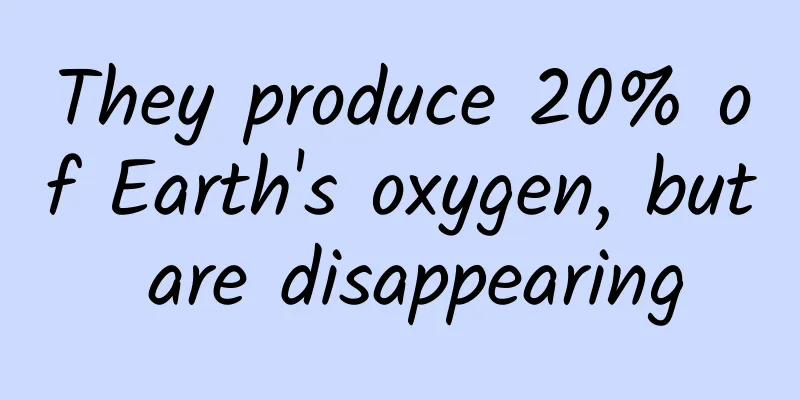They produce 20% of Earth's oxygen, but are disappearing

|
Most life on Earth depends on oxygen to survive. But the most important oxygen producers are not the trees we are familiar with, but the tiny organisms in the water, one of the most important groups of which is diatoms . Diatoms are extremely small single-cell algae, most of which are only a few microns to tens of microns long, and several of them can fit on the tip of a needle. But if you observe these small creatures under a microscope, you will be shocked by their exquisite appearance - in fact, these exquisite structures you see are the cell walls of diatoms , also known as their "silicon shells." Diatom shell under a 1500x microscope (Image source: Massimo brizzi/Wikipedia) Unlike plants or animals, diatom cell walls are made of silicon dioxide, or more precisely, hydrated silicon dioxide, the same ingredient as opal (a gemstone). And like opal, diatom cell walls can also exhibit brilliant structural colors. Opal's play of color (Image source: Dpulitzer) Such a hard shell makes diatoms the absolute winner on Earth. There are more than 20,000 known species of diatoms, which are distributed in oceans, rivers, and lakes all over the world. You can even find diatoms in hot springs or the Southern Ocean. Such a wide distribution also brings huge productivity. According to estimates, in every breath of air you breathe, an average of 20% to 30% of the oxygen is produced by diatoms . This figure even far exceeds the tropical rainforest known as the "lungs of the earth." "Diatoms are among the most important plankton in the ocean," says Jan Taucher, a marine biologist at the GEOMAR Helmholtz Centre for Ocean Research, explaining his interest in them. "Any changes to them could lead to major shifts in the marine food web and even change the ocean's ability to absorb CO2 as a carbon sink." Ocean acidification We all know that climate change is threatening marine life. Carbon dioxide from the atmosphere dissolves into seawater, increasing the acidity of the seawater. This is almost a disaster for marine organisms with carbonate shells (mainly calcium carbonate): if the acidification of the seawater increases, their carbonate shells may be dissolved - this is exactly the disaster that corals and shells in many areas are experiencing. As ocean acidification increases, the carbonate shells of many marine organisms are threatened (Image credit: NOAA) However, for diatoms, the story of climate change is much more complicated. Many studies have shown that diatoms theoretically have the ability to resist ocean acidification and may even benefit from climate change . On the one hand, as a photosynthetic microorganism, when the amount of dissolved carbon dioxide in seawater increases, diatoms can more easily absorb carbon dioxide and increase the rate of photosynthesis. On the other hand, an acidic environment can reduce the dissolution rate of silica, so diatoms can build their own "silicon huts" with less effort. The problem is that these are just theoretical speculations . Recently, Tauchel and his colleagues discovered that previous discussions of diatoms have often missed a key factor that may threaten the survival of diatoms . Silicon in short supply For many plankton in the ocean, the concentration of key nutrients, such as nitrogen or iron, determines their distribution. But diatoms are more concerned with the silicon in seawater. Silicates in seawater are generally in an unsaturated state, so the shells of diatoms are actually very easy to be eroded and dissolved by seawater. When diatoms are alive, they secrete an organic coating on the outside of their shells to provide protection. However, when diatoms die, this protective coating will be degraded by bacteria. As the shells fall to the deep sea under gravity, the silicon in the shells is also released into the seawater "along the way", which to a certain extent makes up for the silicon consumed by diatoms in the surface seawater. In this way, diatoms themselves act as a "biological pump", transporting silicon in seawater from the surface to the deep layer like a pump, and then transporting it back to the ocean surface through global ocean circulation to be used by the next batch of diatoms. Diatoms under the microscope sparkle like gems (Image credit: Watson & Sons) In order to simulate the changes in the marine environment under climate change, Tao Huer's research team adopted the method of enclosure experiment: they isolated a piece of seawater in each of the five oceans and maintained normal seawater circulation by artificially pumping it in and out. This is like intercepting five huge test tubes in the ocean. Researchers can input different concentrations of carbon dioxide into the test tubes to simulate different degrees of ocean acidification scenarios. The results showed that the ratio of silicon to nitrogen in marine sediments increased by an average of 17%. In other words, in more acidic seawater, more siliceous shells fell into the sediments instead of dissolving into the seawater. Diatom dominoes Further model studies have brought greater concerns. In the case of severe acidification of the ocean, the dissolution rate of the shells slows down, and more diatom shells will sink directly to the seafloor after death and remain there for a long time. The ocean circulation obviously cannot make up for this gap, so the diatoms that grow later will not be able to obtain enough silicon to make their own shells. Ocean acidification will lead to a significant decrease in the silicate concentration in surface seawater (red represents increase, blue represents decrease, image source: original paper) The simulation results show that under the high emission scenario, the concentration of silicates in the ocean surface will drop by about 27% in 2200, which will directly lead to a 26% decrease in the number of diatoms. If such a large number of primary producers are lost, other life on Earth will also be greatly affected. In the paper, the researchers are more concerned that "the related consequences for ecosystem function and carbon cycling are more difficult to assess" and the current data do not discuss the domino effects on other consumers in the food chain. Image credit: Howard Lynk Regardless, the findings serve as a warning about how unnoticed feedback mechanisms in the Earth system could alter our predictions of environmental and biological change—we still don’t understand enough about how our planet and the life forms on it interact. For Tauchur, the discovery was a poignant surprise: “It is one of the most telling reminders of the incalculable risks we face if we do not act quickly and decisively to address climate change.” Planning and production Source: Global Science (ID: huanqiukexue) Author: Erqi Editor: Wang Mengru Proofread by Xu Lailinlin |
<<: Your senses may be underestimated! Today, let's take you to rediscover your sense of smell
Recommend
Fenda was once very popular, but then faded out of users’ sight. Why?
In 2016, when knowledge payment platforms were on...
Group buying in 2014: from smoke of war to reshuffle
Before he met LinkedIn CEO Jeff Weiner, Shen Boya...
What does the “Deep Space Gateway” look like, where does this “portal” lead to, and what significance does it have for humanity?
Many friends may use their imagination to tune in...
Master these magical features of Safari browser, and you can uninstall other browsers
Apple's native software has always been excel...
Just after Intel poached its chip director, Apple's technical expert left for Microsoft again to develop server chips
Apple's chip design has reached its peak in r...
Mobike is not worth worshipping too early
Recently, a well-known current affairs observatio...
Bees crawling all over the curtains, alligators sneaking into the auto repair shop! What should you do if you encounter dangerous wild animals?
last year Wild Asian elephants escape from Xishua...
What is online promotion? Do you know several promotion channels?
The Internet is an information gathering field, t...
Ideal Auto: In August 2022, Ideal Auto delivered a total of 4,571 vehicles, two-thirds lower than its peak period
Ideal Auto released its sales results for August,...
Apple's review has always failed. What should I do to get my application approved?
When you have read a large number of official ema...
How to use the "Apple Store" monitoring tool
Recently, I have heard many CPs discussing ASO . ...
Juyongguan: How did ancient China “play” with light-speed communication and cryptography
Juyongguan is known as the most powerful pass in ...
Summary of the latest information flow advertising platforms in 2017
Feed ads are a form of advertising that is inters...
Ford calls for equal treatment in the UK against favouring Nissan
Recently, Ford Europe CEO Jim Farley will meet wi...
I've been wrong all along! The pillow is not for your head, but for this...
Today, Science Popularization China is going to t...









